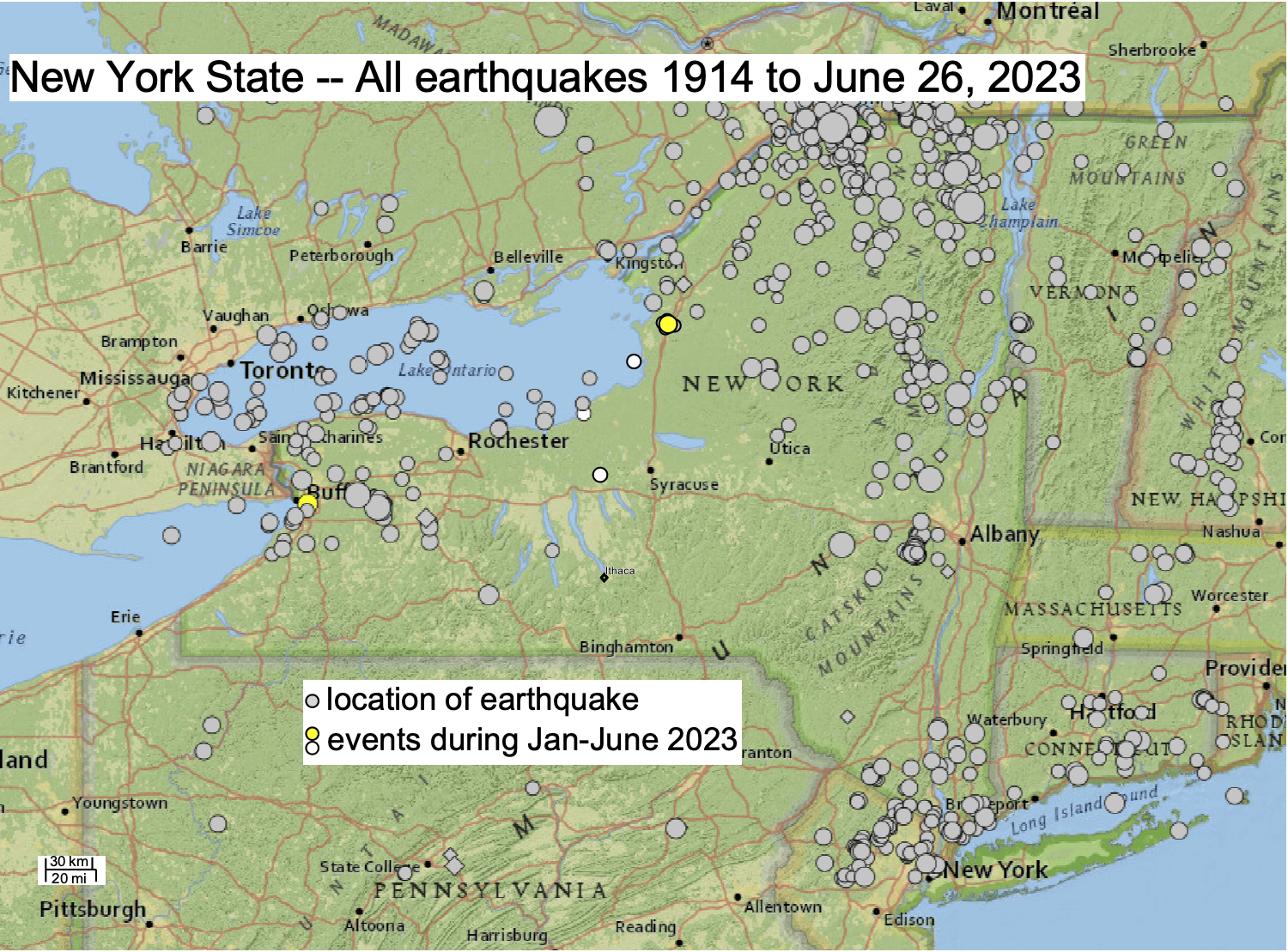Earthquake hazards in the New York City area Map depicting the extent of the Ramapo. Map showing Quaternary faults in the western US Note that most faults that can affect residents are. WEB As in most other areas east of the Rocky Mountains the best guide to earthquake hazard in the northeastern US Is probably the locations of the past. WEB Buffalo Sits Near Pretty Significant Fault Line A magnitude 38 earthquake that hit the. WEB The Clarendon-Linden fault system is a major series of fault lines in western New York state in the United States..
Earthquake hazards in the New York City area Map depicting the extent of the Ramapo. Map showing Quaternary faults in the western US Note that most faults that can affect residents are. WEB As in most other areas east of the Rocky Mountains the best guide to earthquake hazard in the northeastern US Is probably the locations of the past. WEB Buffalo Sits Near Pretty Significant Fault Line A magnitude 38 earthquake that hit the. WEB The Clarendon-Linden fault system is a major series of fault lines in western New York state in the United States..
**Minor Earthquake Shakes Upstate New York** **April 23, 2023** A minor magnitude 3.6 earthquake hit parts of upstate New York on April 23rd, 2023, according to the United States Geological Survey (USGS). The tremor occurred at 5:06 p.m. EST, about four miles outside of Adams, New York. The quake was felt in several surrounding counties, including Jefferson, Lewis, and Oswego. According to the USGS, the earthquake had a depth of one kilometer (0.6 miles). No injuries or damage have been reported. Residents who felt the earthquake are encouraged to report their experiences on the "Did You Feel It?" website of the USGS. This information helps scientists understand the extent and impact of earthquakes. The USGS notes that minor earthquakes are common in upstate New York, but larger temblors are rare. In 2010, a magnitude 5.0 earthquake struck near Saranac Lake, causing significant damage to buildings and infrastructure. Residents are advised to be aware of the potential for earthquakes in their area and to take precautions such as securing heavy objects and having an emergency plan in place.

Deep Geothermal Heat Research Cornell University
**Magnitude 4.8 Earthquake Shakes New York City Region** **New York City, NY** – A magnitude 4.8 earthquake shook buildings across the New York City region shortly after 10:20 am today, rattling residents and causing widespread panic. The earthquake, which struck approximately 40 miles west of New York City in Readington Township, New Jersey, was felt in several major cities, including Philadelphia and Washington, D.C. According to preliminary data from the U.S. Geological Survey, the earthquake had a depth of about 8 kilometers and caused widespread shaking. Emergency services have been deployed to affected areas, and there are no immediate reports of major damage or injuries. Residents are advised to remain calm and follow safety protocols, such as taking shelter under a sturdy table or desk and staying away from windows and doors. Aftershocks are also possible, so it is crucial to remain vigilant. The earthquake is a reminder of the seismic activity that can occur in the Northeast, and it is essential for residents to be prepared for future events.
**Strongest Earthquake in 40 Years Strikes Buffalo, New York** On Monday morning, a 3.8-magnitude earthquake struck near Buffalo, New York. This is the strongest earthquake recorded in the area in the past 40 years. The earthquake occurred at approximately 6:15 AM and was centered in the suburb of West Seneca, east of Buffalo. Shaking was felt across the Buffalo area, including in the city itself as well as in neighboring communities. According to the United States Geological Survey (USGS), the earthquake had a depth of 1.2 kilometers (0.7 miles). There have been no reports of any injuries or significant damage. The USGS has reported that there have been no earthquakes of magnitude 5.0 or greater in the past 24 hours, and no earthquakes of magnitude 1.5 or greater in the past 7 days. **Historical Earthquake Activity in Buffalo** The Buffalo area has a history of seismic activity, although it is relatively infrequent. In October 1857, an intensity VI 6 earthquake shook Buffalo, causing walls to vibrate and objects to fall from shelves. Rumbling noises were also heard in Lockport. While Monday's earthquake was the strongest in 40 years, it is important to note that earthquakes of this magnitude are not uncommon in the Buffalo area. The USGS estimates that there is a 10% chance of an earthquake of magnitude 3.8 or greater occurring within the next year in the Buffalo region. **Response to the Earthquake** Local authorities are monitoring the situation and have not issued any evacuation orders. Residents are advised to follow safety precautions, such as securing any loose objects and having an emergency plan in place. The USGS continues to monitor seismic activity in the Buffalo area and will provide updates as they become available.

Comments